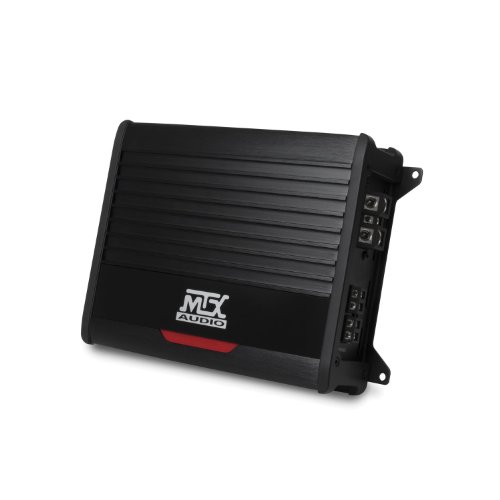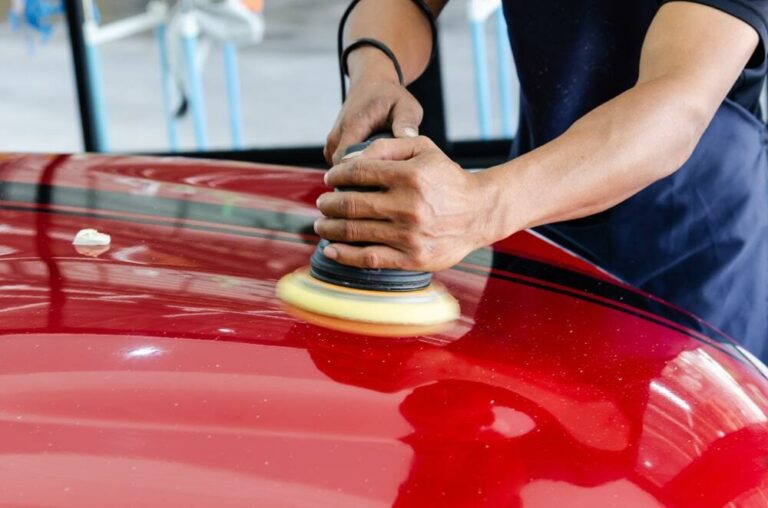How Long Does A Brand New Car Last? Unlocking the Secrets to Automotive Longevity
How Long Does A Brand New Car Last? Unlocking the Secrets to Automotive Longevity cars.truckstrend.com
The scent of a brand new car is intoxicating. That pristine paint, the untouched interior, the hum of a perfectly tuned engine – it’s a moment of pure automotive bliss. But as you drive off the lot, a practical question inevitably arises: "How long does this brand new car truly last?" It’s a question that goes beyond mere miles on the odometer; it delves into reliability, safety, economic viability, and the sheer joy of ownership. For such a significant investment, understanding the lifespan of your new vehicle and how to maximize it is paramount.
In an era of advanced engineering and manufacturing, modern vehicles are built to last longer than ever before. However, their ultimate longevity isn’t solely determined by the factory; it’s a dynamic interplay between initial build quality, environmental factors, and, most crucially, the care and attention of the owner. This comprehensive guide will explore the various facets that dictate how long your brand new car will remain a reliable, efficient, and enjoyable companion on the road.
How Long Does A Brand New Car Last? Unlocking the Secrets to Automotive Longevity
The Baseline: Manufacturer Expectations and Average Lifespan
Gone are the days when a car hitting 100,000 miles was considered a major milestone, signaling the approaching end of its life. Today, with improved materials, sophisticated engineering, and tighter manufacturing tolerances, 150,000 to 200,000 miles is often considered a standard expectation for a well-maintained vehicle. Many cars, particularly those from reputable brands known for durability, regularly exceed 250,000 miles, and some even push past 300,000.
According to industry reports, the average age of light vehicles on U.S. roads has steadily climbed, currently standing at over 12 years. This trend reflects the increased durability of modern cars and consumers’ desire to hold onto their vehicles longer. However, "lasting" doesn’t just mean the engine still turns over. It means maintaining a level of reliability, safety, and economic efficiency that makes continued ownership practical and desirable. The manufacturer provides the foundation; the owner builds upon it.
Key Factors Influencing Your Car’s Longevity
While a car rolls off the assembly line with an inherent potential lifespan, numerous factors come into play that can significantly extend or curtail its journey. Understanding these elements is the first step toward becoming a proactive owner.
1. Driving Habits and Environment
How you drive and where you drive are critical determinants of wear and tear.
- Aggressive Driving: Frequent rapid acceleration, hard braking, and high-speed cornering put immense stress on the engine, transmission, brakes, and tires. This accelerates wear and can lead to premature component failure.
- Gentle Driving: Smooth acceleration, gradual braking, and anticipating traffic flow reduce strain on all mechanical components, significantly extending their life.
- Short Trips vs. Long Trips: Surprisingly, frequent short trips (e.g., less than 10-15 minutes) can be harder on an engine than longer journeys. The engine doesn’t reach optimal operating temperature, leading to condensation buildup, reduced lubrication effectiveness, and increased wear.
- Road Conditions: Driving regularly on rough roads, through potholes, or in off-road conditions puts strain on the suspension, steering components, and tires.
- Climate: Extreme temperatures (both hot and cold) can stress fluids, rubber components, and batteries. Road salt used in winter regions is a notorious culprit for accelerating rust on the undercarriage and body panels.

2. Adherence to Maintenance Schedules
This is arguably the single most impactful factor within an owner’s control. Regular, timely maintenance isn’t just about fixing problems; it’s about preventing them.
- Oil Changes: The lifeblood of your engine. Regular oil changes prevent sludge buildup, ensure proper lubrication, and dissipate heat. Using the correct type and viscosity of oil (conventional vs. synthetic) as specified by the manufacturer is crucial.
- Fluid Checks & Flushes: Transmission fluid, brake fluid, coolant, and power steering fluid all degrade over time. Regular checks and timely flushes (as per the owner’s manual) prevent component wear and system failures.
- Tire Care: Proper tire pressure, regular rotation, and alignment maximize tire life and ensure safe handling, reducing strain on suspension components.
- Brake Inspections: Regular checks of brake pads, rotors, and fluid ensure optimal stopping power and prevent costly damage from metal-on-metal contact.
- Filter Replacements: Air filters (engine and cabin), fuel filters, and oil filters keep contaminants out of critical systems, protecting components and maintaining efficiency.
- Timing Belt/Chain: If your car has a timing belt, replacing it at the manufacturer-recommended interval is non-negotiable. Failure can lead to catastrophic engine damage.
- Addressing Warning Lights: Ignoring dashboard warning lights is a recipe for disaster. These lights are early indicators of potential issues that, if addressed promptly, can prevent major breakdowns.
3. Vehicle Type, Brand, and Design
Some vehicles are inherently built with longevity in mind, while others may prioritize performance or luxury over long-term durability.
- Brand Reputation: Certain automotive brands have historically earned reputations for superior reliability and longevity (e.g., Toyota, Honda, Subaru). While no brand is infallible, their track records often speak for themselves.
- Vehicle Type: Generally, simpler vehicles with fewer complex electronic systems may have fewer potential points of failure. Heavy-duty trucks and SUVs might be built with more robust components, but their weight can also increase wear on certain parts.
- Complexity of Systems: Modern cars are laden with advanced electronics, sensors, and complex powertrains. While these enhance safety and performance, they also introduce more potential components that could fail, leading to expensive repairs.
4. Environmental Protection and Storage
Where and how you store your car can also play a role in its longevity.
- Garaged vs. Outdoor Parking: Keeping your car in a garage protects it from extreme weather, UV damage (which degrades paint, plastic, and rubber), and even hail.
- Rust Prevention: In regions where road salt is used, regular undercarriage washes are essential to prevent rust, which can compromise structural integrity and corrode vital components.
Recognizing the End of the Road: When to Consider Replacement
Even with the best care, all cars eventually reach a point where continued ownership becomes impractical or uneconomical. Recognizing these signs can help you make an informed decision.
- Repair Costs Exceed Value: A common rule of thumb is that if a major repair (e.g., transmission, engine overhaul) costs more than half the car’s current market value, it might be time to consider a replacement.
- Frequent Breakdowns: If your car is constantly in the shop for various issues, leading to significant downtime and recurring expenses, its reliability has diminished.
- Safety Concerns: Structural rust, frame damage, or repeated failures of critical safety systems (brakes, steering, airbags) are non-negotiable reasons to consider retirement.
- Significant Decline in Fuel Efficiency: A sudden or gradual drop in MPG can indicate underlying engine or drivetrain issues that are costly to fix.
- Parts Availability: For very old or niche vehicles, finding replacement parts can become difficult and expensive.
- Emissions Issues: If your car consistently fails emissions tests and the required repairs are extensive, it may no longer be environmentally or legally viable to operate.
- Personal Financial Considerations: Sometimes, upgrading to a newer, more fuel-efficient, and reliable vehicle simply makes more financial sense in the long run, even if your old car is still running.
Practical Tips for Maximizing Your Brand New Car’s Lifespan
Extending your car’s life isn’t just about luck; it’s about consistent, proactive effort. Here’s actionable advice:
- Read Your Owner’s Manual: This is your car’s bible. It contains specific maintenance schedules, fluid types, and warnings unique to your vehicle.
- Stick to the Maintenance Schedule: Don’t skip or delay services. These intervals are carefully calculated by engineers to ensure optimal performance and longevity. Consider "severe duty" schedules if you frequently drive in extreme conditions (stop-and-go traffic, very hot/cold climates, dusty roads).
- Use Quality Fluids and Parts: Don’t skimp on cheap oil, filters, or replacement parts. OEM (Original Equipment Manufacturer) or high-quality aftermarket parts often pay for themselves in longevity and performance.
- Drive Smoothly: Avoid aggressive acceleration, hard braking, and sudden steering inputs. Smooth driving reduces stress on the engine, transmission, brakes, tires, and suspension.
- Keep it Clean, Inside and Out: Regular washing (especially in winter to remove salt) prevents rust. Waxing protects the paint. Cleaning the interior preserves materials and makes the car a more pleasant place to be. Don’t forget to clean the underside.
- Address Minor Issues Promptly: Strange noises, dashboard warning lights, minor leaks, or changes in performance should be investigated immediately. A small problem left unaddressed can quickly escalate into a major, costly repair.
- Find a Trusted Mechanic: Building a relationship with a reputable mechanic who understands your vehicle’s history can be invaluable.
- Consider an Extended Warranty (Carefully): While not for everyone, a good extended warranty can provide peace of mind for major repairs, especially on complex vehicles. However, read the fine print carefully.
Factors Influencing Car Longevity: Investment vs. Return
Understanding the effort and cost associated with maximizing your car’s lifespan is crucial. This table outlines key actions and their impact.
| Factor/Action | Type of Investment (Effort/Cost) | Impact on Longevity | Notes |
|---|---|---|---|
| Regular Scheduled Maintenance | Moderate Financial, Moderate Time | High: Prevents major failures, optimizes performance | Oil changes, fluid flushes, filter replacements, tire care. Follow manufacturer’s specific intervals. |
| Gentle & Proactive Driving | Low Effort, High Awareness | High: Reduces wear on engine, transmission, brakes | Smooth acceleration/braking, avoiding aggressive maneuvers, anticipating traffic. |
| Prompt Repair of Issues | Variable Financial, Moderate Time | High: Prevents cascading damage, ensures safety | Addressing warning lights, strange noises, minor leaks immediately. Don’t procrastinate! |
| Regular Cleaning (Interior/Exterior) | Low Effort, Moderate Time | Medium: Prevents rust, preserves interior, good resale | Frequent washing (especially underside in winter), waxing, interior detailing. Protects against elements. |
| Using Quality Fluids & Parts | Moderate Financial | Medium-High: Better performance, less wear | Opting for OEM or reputable aftermarket components and manufacturer-recommended fluids (e.g., synthetic oil). |
| Garaging/Shelter | Variable Financial (Garage/Cover) | Medium: Protects from elements (sun, hail, rust) | Reduces wear from UV rays, extreme temperatures, and prevents accelerated corrosion. |
| Adherence to Owner’s Manual | Low Effort, High Awareness | High: Adheres to manufacturer’s specifications | The ultimate guide to your specific vehicle’s needs. Crucial for optimal performance and lifespan. |
Frequently Asked Questions (FAQ)
Q1: How many miles can a brand new car last?
A1: Modern cars can typically last between 150,000 and 200,000 miles with proper maintenance. Many well-cared-for vehicles exceed 250,000 miles, and some even reach 300,000 or more.
Q2: Is 200,000 miles good for a car?
A2: Absolutely! Reaching 200,000 miles indicates a very durable vehicle and diligent ownership. At this mileage, the car has provided significant value and extended service.
Q3: Does brand affect longevity?
A3: Yes, some brands have a stronger reputation for reliability and longevity due to their engineering, manufacturing quality, and parts sourcing. Brands like Toyota, Honda, and Subaru are often cited for their long-term durability.
Q4: What’s the most important maintenance for longevity?
A4: Regular oil changes with the correct type of oil, adherence to the manufacturer’s fluid change schedules (transmission, brake, coolant), and prompt attention to any warning lights or unusual noises are paramount.
Q5: When should I get rid of my car?
A5: Consider replacing your car when repair costs consistently outweigh its market value, it experiences frequent breakdowns, there are significant safety concerns, or its fuel efficiency has drastically declined. Personal financial factors also play a role.
Q6: Does driving style really matter for a car’s lifespan?
A6: Yes, significantly. Aggressive driving (hard acceleration, braking, and cornering) puts immense stress on all components, accelerating wear. Gentle, smooth driving extends the life of your engine, transmission, brakes, and tires.
Q7: Can I extend my car’s life beyond average expectations?
A7: Absolutely. By meticulously following maintenance schedules, using quality parts and fluids, driving gently, keeping the car clean, and addressing issues promptly, you can often push your vehicle’s lifespan well beyond the average.
Conclusion
The question of "How long does a brand new car last?" doesn’t have a single, fixed answer. It’s not a predetermined expiration date but rather a journey influenced by a multitude of factors. While modern manufacturing provides an excellent foundation, the ultimate longevity of your vehicle rests significantly in your hands as the owner.
By embracing proactive maintenance, adopting sensible driving habits, and addressing issues as they arise, you transform your car from a mere mode of transport into a long-term, reliable asset. A brand new car represents a significant investment, and with diligent care, that investment can continue to pay dividends in dependable service, safety, and peace of mind for many years and hundreds of thousands of miles to come.





